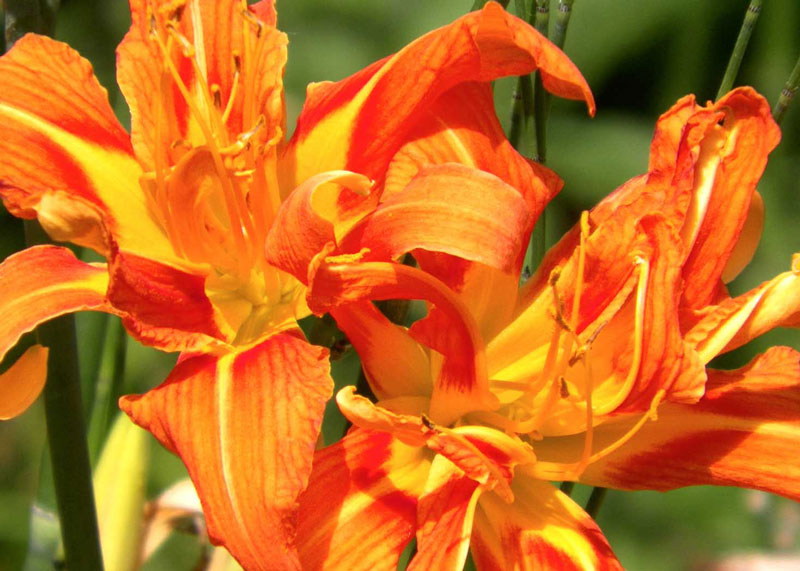We’re talking ‘Daylilies’ here
Every hobby, every industry has its own special language. Even down to something as simple as the lovely daylily flower. Here are words you’re likely to encounter as you hear people talking or as you read descriptions about them.
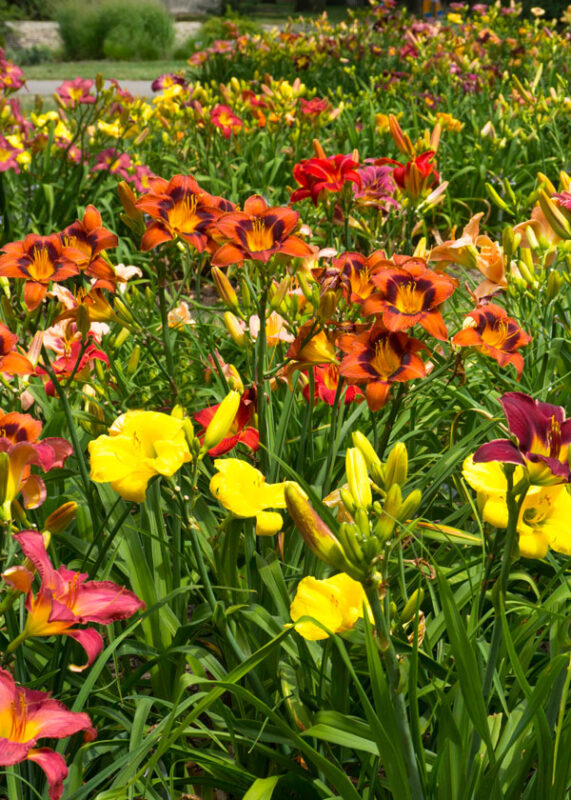
Scape – The leafless stalk that supports the flowers.
Crown – The point at which the daylily plant emerges from the ground, that is, the base of the plant.
Fan – The cluster of leaves growing from a single crown. It’s usually 2-dimensional, like the fingers of one hand fully extended straight out.
Diploid – A variety with a normal number of chromosomes. These are usually somewhat more “delicate” looking and they may be earlier blooming.
Tetraploid – These varieties have been bred to have double the normal number of chromosomes. The plants are often sturdier and more robust with larger flowers and thicker stems and petals.
Double – Flowers have more than the standard 3 petals and 3 sepals.
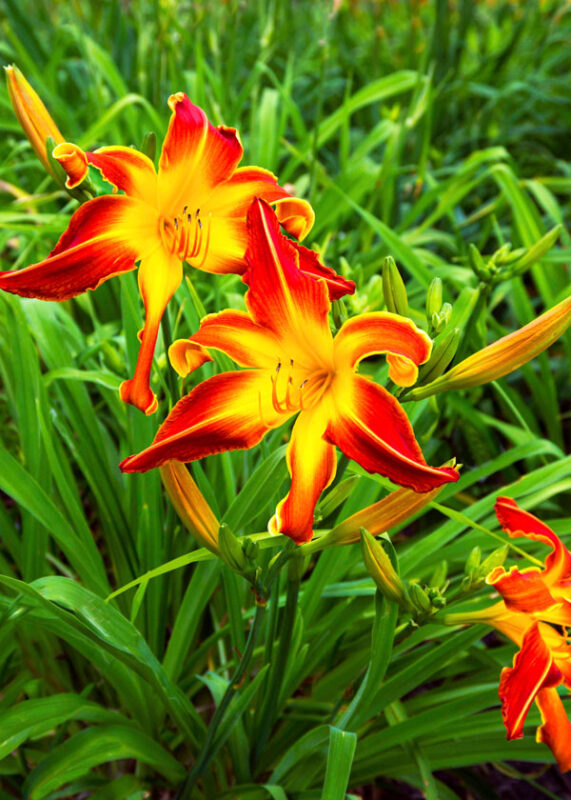
Spider – Variety that produces very long petals for a wispy appearance.
Recurved – Petals curl back behind themselves.
Eyed – Both petals and sepals have a contrasting band, often of a darker color within the flowers.
Evergreen – Variety whose foliage stays green year-round in mild climates (South Texas).
Dormant – Variety whose foliage dies back in winter and regrows each spring.
Nocturnal – Variety that opens in evenings instead of early in the morning.
Reblooms – A variety that produces a second and sometimes even a third round of floral scapes each season.
Deadhead – Removal of spent blooms to encourage neatness in the garden, later dried scapes.
Division – The process by which a plant that has multiplied into several new plants can be broken apart to propagate new plants.
Proliferation – The unusual formation of a small aerial plantlet along a floral scape. It will have leaves but no roots. It can be cut loose and potted. It will be genetically identical to the mother plant.
Light requirements – Daylilies do best in full or almost full sunlight. 6-7 hours minimum.
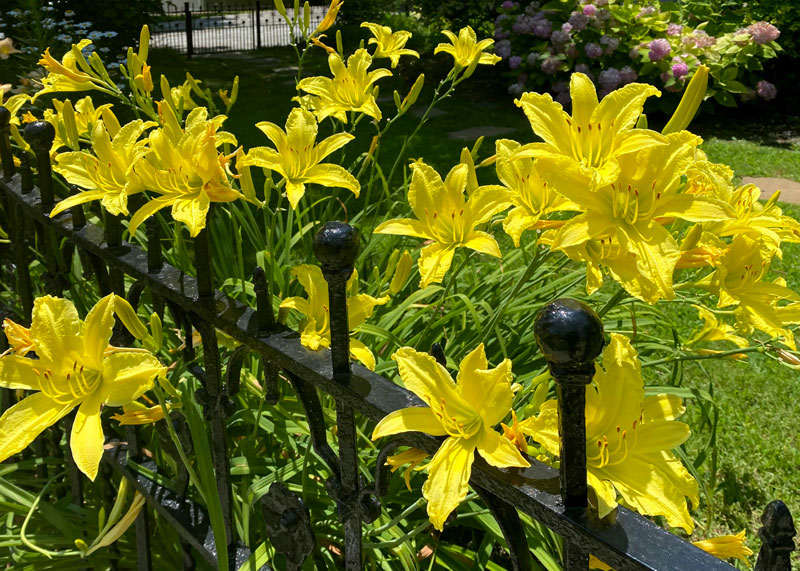
Soil needs – Raised beds developed with several inches of a mixture of sphagnum peat, well-rotted compost, processed manure, and finely ground pine bark. Include 1 in. of expanded shale if you’re working up a heavy clay soil.
Fertilizer requirements – Unless a soil test dictates otherwise, daylilies benefit most from applications of a high-quality, high-nitrogen food in early spring as new growth starts, again just before scapes start to develop, and again in early fall as new fans are produced.
Spacing – Crowded plants quit flowering. Therefore, dig and divide your plants every 3-5 years. Give away or discard unneeded extras. Distances will depend on mature sizes, generally 15-20 in. apart.
Pest problems – Aphids, thrips, slugs/snails, crown rot are the only likely ones. Learn what to look for should they appear.
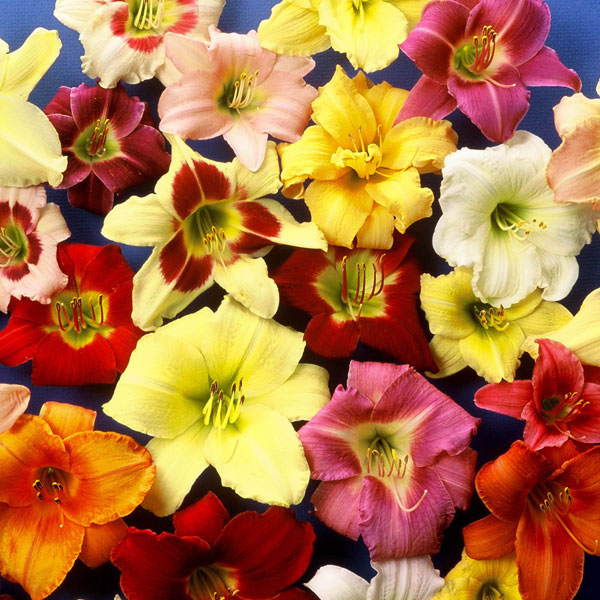
Awards given by the American Daylily Society annually to recognize excellence in breeding, performance, and distinctiveness:
Stout Medal
The top individual award given annually to the daylily cultivar that has proven itself superior in performance and beauty across many regions over time. (One cultivar is selected annually from previous Award of Merit winners, see next.)
Award of Merit (AM)
Recognizes daylilies that show outstanding quality and performance. As many as 12 cultivars may be selected each year. They are chosen from Honorable Mention winners.
Honorable Mention (HM)
This is the first official recognition a registered cultivar can earn. It indicates promise based on garden performance and appeal. Typically, up to 20 cultivars will be recognized annually 3 years after they were introduced.
Specialty Awards:
Don C. Stevens Award for best eyed or banded cultivar.
R.W. Munson Award for best unusual form of daylily.
L. Ernest Plouf Award for best double daylily.
Eugene S. Foster Award for best late-season daylily.
Annie T. Giles Award for best small-flowering variety.
Extra-large Diameter Award for best daylily greater than 7-in. in size
Early Season Bloom Award for best cultivar blooming in the early season.
Local regions of the ADS also have their own popularity polls if you’re looking for types that have performed especially well in Texas or even in your part of Texas.
Note: Looking for unusual and new daylily cultivars? Members of the American Daylily Society in your town are most likely to have them. As they clear out their garden they’ll like have a day in the early fall where they’ll be digging and dividing – and selling! Or, there may be a local sale of that chapter of the ADS.


